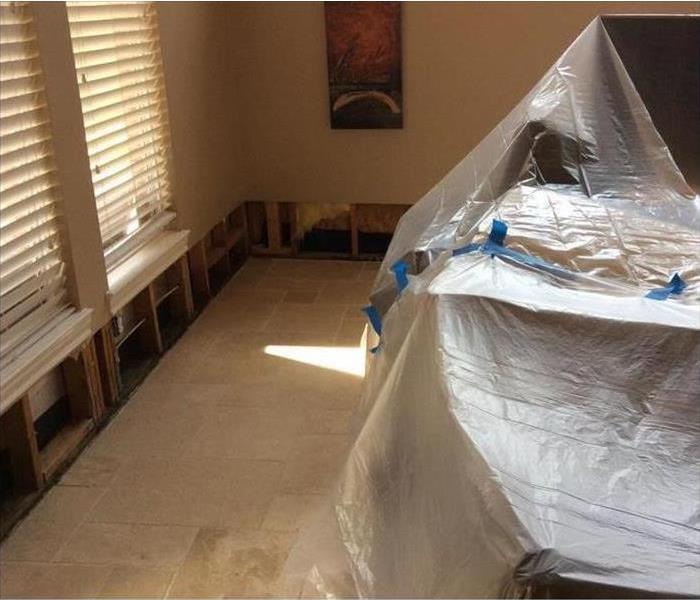What To Expect From Your Water Damage Restoration Team
1/11/2022 (Permalink)
Storm Damage Restoration Team
If your home was recently involved in a serious storm or flood, you may need to call in your San Antonio, TX, storm restoration team for immediate and cost-effective assistance with water damage big and small. For example, the longer you wait to seek help, the greater the likelihood that your home develops secondary damage:
- Mold
- Drywall rot
- Buckling floorboards
- Insulation damage
Each of the above problems is much costlier to fix than primary damage and may necessitate the tear out of damaged materials and replacement with new ones. Primary damage restoration, on the other hand, simply involves drying out the affected area and maybe cleaning contaminated materials.
Restoring Secondary Water Damage
The restoration process for secondary damage begins in much the same way as the remediation process for primary damage. The storm damage restoration team will begin by drying out the affected area to ensure that the risk of moisture damage is eliminated. Once the area is dried out, the team may perform a flood cut, which requires them to tear out up to 18 inches of the bottom portion of the affected walls. This is done to remove any damaged insulation and to further dry out the interior of the wall. If necessary, the team may remove wet insulation and replace it with new insulation.
The Finishing Touches
Once the team feels that the entire area has been effectively dried, it will continue to clean damaged surfaces to remove any contaminants. Some items, such as curtains and other draperies, may need to be dry cleaned. Furniture, carpeting and other porous surfaces and items may need to be disposed of and replaced. Non-porous surfaces, such as wood and metal, may simply need to be cleaned with commercial-grade cleaners.
If your home was involved in a flood, there is a good chance that your restoration team will need to tear out portions of drywall and insulation. Your local remediation team can go over the ins and outs of storm damage restoration efforts with you in great detail and help make the process as smooth as possible.






 24/7 Emergency Service
24/7 Emergency Service
